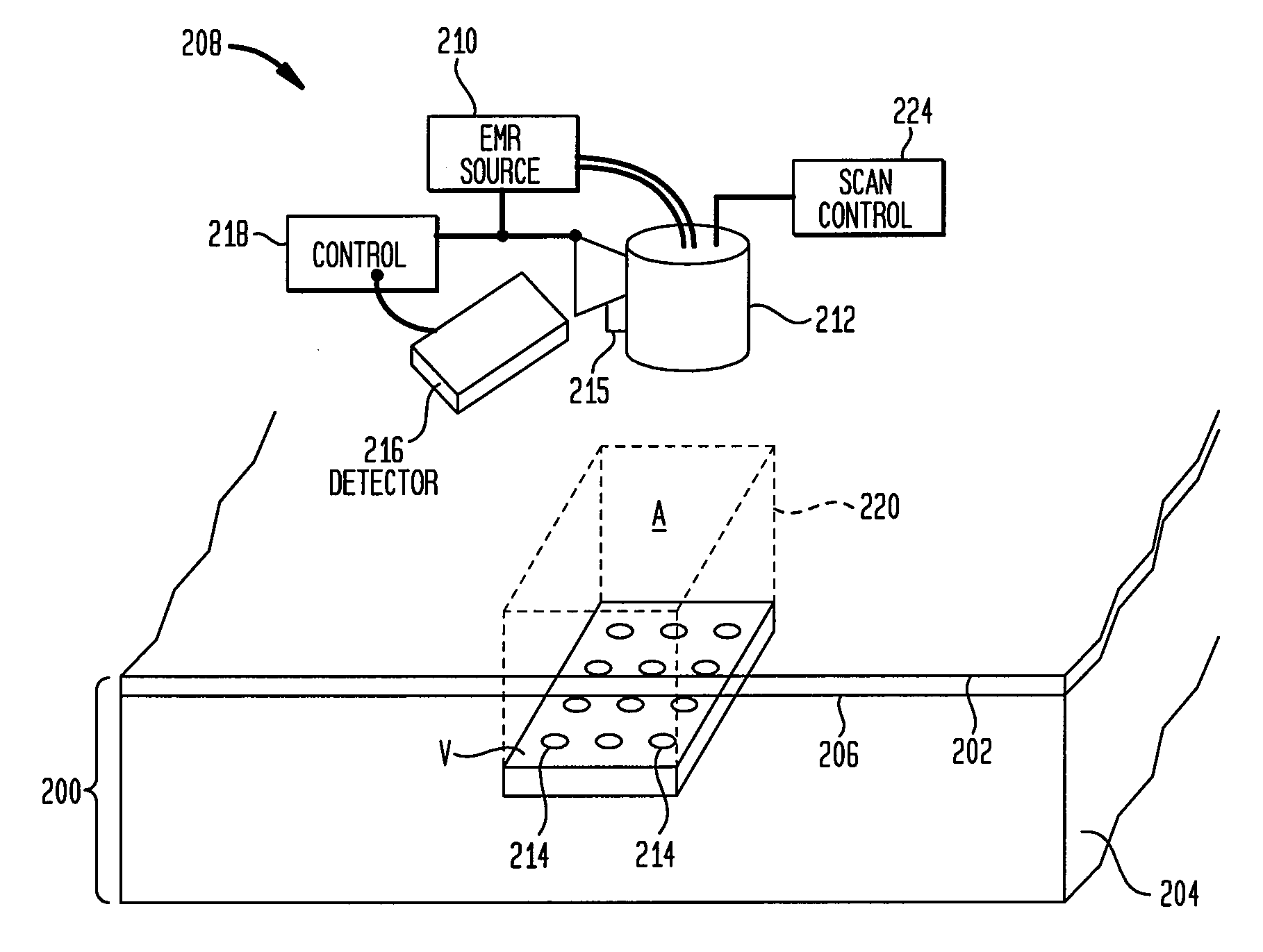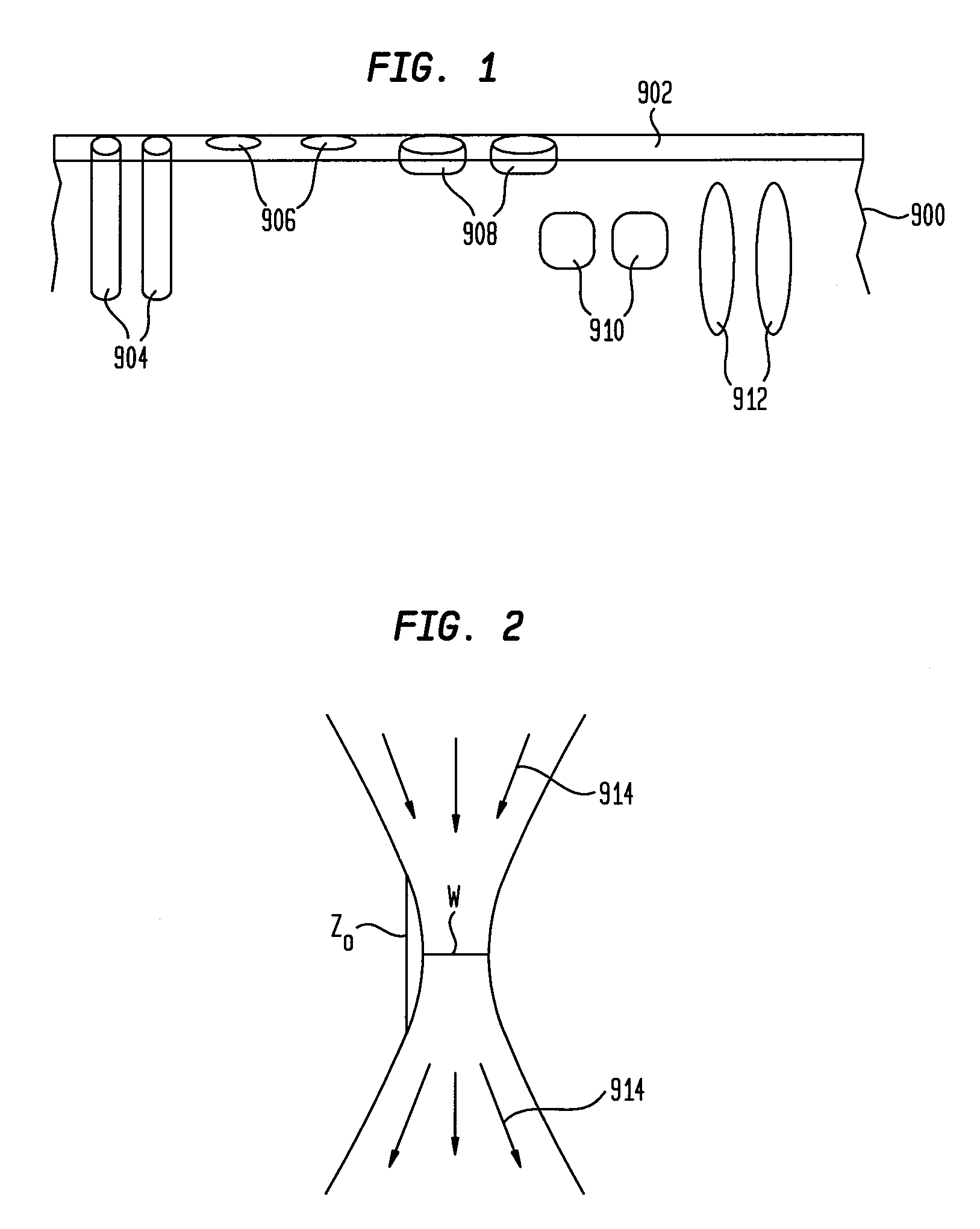Methods And Devices For Fractional Ablation Of Tissue
a fractional ablation and tissue technology, applied in the field of soft and hard tissue ablation with electromagnetic energy, can solve the problem of insufficient bulk tissue damage, and achieve the effect of reducing the area of ablation of the groov
- Summary
- Abstract
- Description
- Claims
- Application Information
AI Technical Summary
Benefits of technology
Problems solved by technology
Method used
Image
Examples
second embodiment
[0198]FIG. 21 depicts a hand piece 450 that uses a mirror in order to reflect portions of EMR, while allowing certain patterns of the EMR to pass through holes in order to create islets of treatment. The embodiment of FIG. 21 includes a light source 452 and, in some embodiments, beam-shaping optics 454 and a waveguide 456. These components can be in a hand piece 450, such as those hand pieces set forth above. In other embodiments, the light source 452 can be in a base unit outside of the hand piece 450. The light source 452 can be a laser, a flashlamp, a halogen lamp, an LED, or another coherent or thermal source. In short, the light source 452 can be any type of EMR source as set forth above. The beam-shaping optics 454 can be reflective or refractive and can serve to direct EMR downward toward the output of the hand piece. The beam-shaping optics 454 can generally be disposed above and to the sides of the light source 452. The waveguide 456 can be used, for example, for homogeniza...
experiment 2
[0364]2. Treatment of Tissue Using 2940 nm and a Pitch of 330 μm
[0365]In the following experiment, a sample of Yucatan black pig skin was treated in vitro using a device similar to device 500 of FIGS. 7-9. The device applied EMR at a wavelength of 2940 nm using a pitch of 30 micrometers to form the EMR islets. The skin was stored at −20 C for approximately 3 months. The skin was defrosted prior to testing and warmed to room temperature. The skin was marked with a marking pen and treated with the EMR. The skin was then stretched and pinned down on a flat surface. A drop of black tattoo ink was placed on the treated area and massaged into the micro-holes. (In another test, red organic molecules in water (Eosin) were applied to the micro-holes in a method similar to the procedure described for tattoo ink.) The skin was released, and a 6 mm biopsy was obtained from the treated area. The biopsy was frozen and manually cut into 100-300 micron sections. The segments were examined with a BH...
experiment 3
[0400]c. Treatment of Slice of ex vivo Pig Skin
[0401]A thin slice of fresh pig skin was trapped between two glass slides and treated similarly to the wet paper described in Experiment 2, using the same treatment parameters. As it is shown in FIG. 57, the depth of the resulting micro-holes was approximately 350-400 micrometers and the diameter of the micro-holes was approximately 50-75 micrometers.
[0402]d. Experiment 4—Traverse Micro-Holes in the Human Nail in vivo.
[0403]EMR-treated islets were created generally perpendicular to the surface of a human finger nail. The parameters employed in this experiment were the same as those described in Experiments 2 and 3. However, in this case, the laser was fired twice, while it was fired once in Experiments 2 and 3. As a result of the treatment, the subject had a tingling sensation after the second firing but did not experience pain from the treatment. A burning sensation was felt after applying a 10% ammonia solution, which was very similar...
PUM
 Login to View More
Login to View More Abstract
Description
Claims
Application Information
 Login to View More
Login to View More - R&D
- Intellectual Property
- Life Sciences
- Materials
- Tech Scout
- Unparalleled Data Quality
- Higher Quality Content
- 60% Fewer Hallucinations
Browse by: Latest US Patents, China's latest patents, Technical Efficacy Thesaurus, Application Domain, Technology Topic, Popular Technical Reports.
© 2025 PatSnap. All rights reserved.Legal|Privacy policy|Modern Slavery Act Transparency Statement|Sitemap|About US| Contact US: help@patsnap.com



